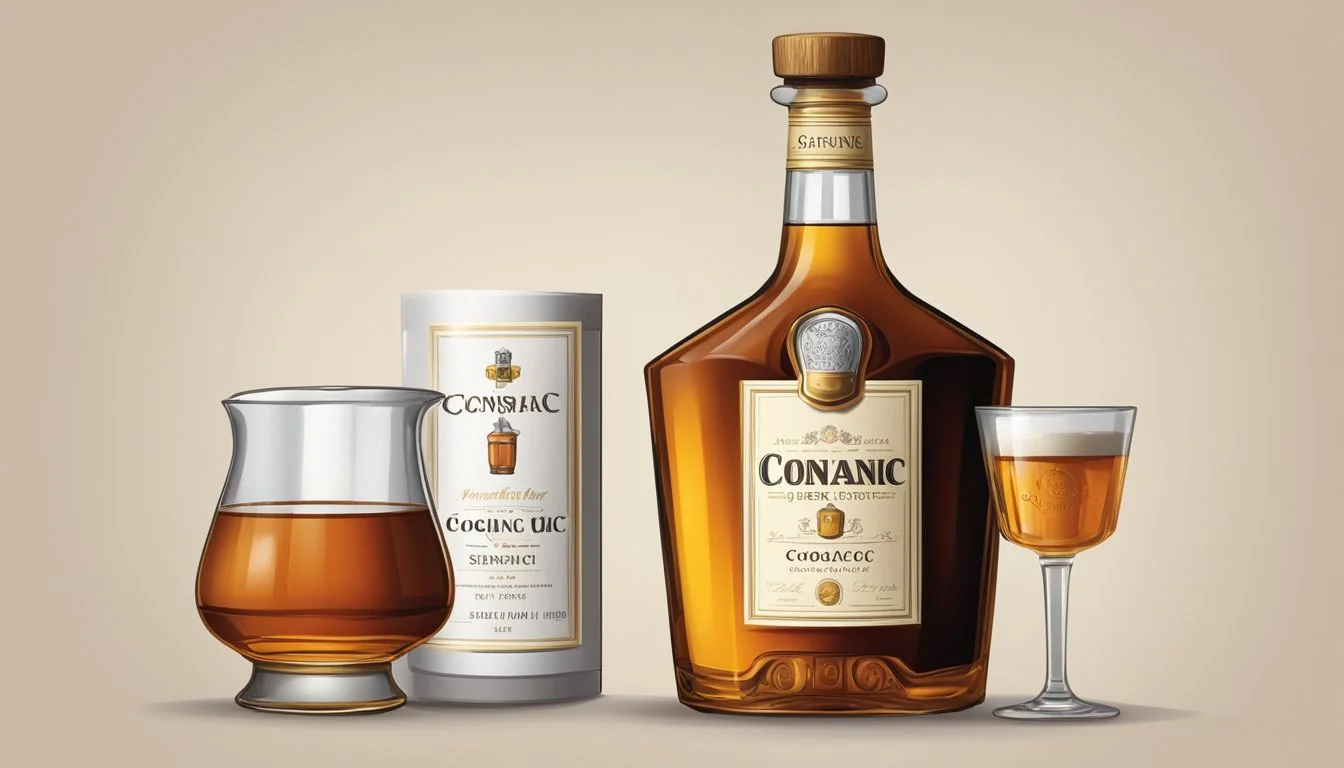How Many Servings of Cognac Is Too Much
Understanding Safe Consumption
Cognac, a type of brandy from southwestern France, has a rich history and a distinctive flavor that many enjoy. However, knowing the right amount to consume is crucial. The standard serving size for cognac is generally one ounce, and moderate drinking guidelines recommend up to one drink per day for women and up to two drinks per day for men. Exceeding these amounts regularly can lead to health issues related to excessive alcohol consumption.
Moderate drinking has been associated with certain health benefits, such as improved heart health and better circulation. This is only true when consumption is kept within recommended limits. Cognac should ideally be enjoyed neat, at room temperature, in a tulip-shaped glass to fully appreciate its aroma and flavor. Different serving practices can dilute or alter its taste, diminishing the experience.
Understanding how much is too much is essential to enjoying cognac responsibly. By adhering to recommended serving sizes and quantities, one can savor the unique qualities of cognac without jeopardizing their well-being.
Understanding Cognac
Cognac is a distinguished spirit from the Cognac region of France, known for its meticulous production process and rich history. This section covers the basics of Cognac, its production and quality, and the proper ways to serve and enjoy it.
The Basics of Cognac
Cognac is a type of brandy that originates from the Cognac region in France. It is exclusively produced from specific grape varieties, such as Ugni Blanc. Cognac is appreciated for its variety of aromas and flavors, which develop through precise methods of distillation and aging.
It must be double-distilled in copper pot stills known as "Charentais" or "Alembic." This process ensures a high-quality spirit. Different grades of Cognac—VS (Very Special), VSOP (Very Superior Old Pale), and XO (Extra Old)—indicate the minimum aging period in oak barrels, ranging from two years to over ten years.
Cognac Production and Quality
The quality of Cognac is heavily influenced by its production methods. It is distilled twice in copper pot stills, which helps in concentrating its flavors and aromas. The spirit is then aged in oak barrels, imparting tannins and unique woody notes. The longer it ages, the more complex its profile becomes.
Different classifications, such as VS, VSOP, and XO, represent the aging duration. VS Cognac is aged for a minimum of two years, while VSOP is aged for at least four years. XO Cognac must be aged for a minimum of ten years, bringing a deeper, richer flavor. This aging process is crucial in defining the elegance and quality of the final product.
Proper Ways to Serve and Enjoy Cognac
Choosing the right glass enhances the Cognac experience. A tulip glass, balloon glass, or snifter is ideal for appreciating its aroma and flavor. Pouring a modest amount allows you to swirl the liquid gently, releasing its intricate aromas. Serving Cognac neat is recommended to enjoy its authentic taste fully.
The optimal temperature for serving Cognac is slightly below room temperature, around 18-20°C (65-68°F). This temperature preserves its complex flavors without causing alcohol evaporation. Enjoying it slowly allows one to appreciate its evolving bouquet, from the first sniff to the final sip.
Alcohol Guidelines and Standard Servings
Understanding alcohol guidelines and standard servings helps ensure responsible drinking. This section explains what constitutes a standard drink and highlights specific recommendations for different genders. Additionally, it outlines the appropriate serving size for Cognac.
Defining a Standard Drink
A standard drink in the United States typically contains about 14 grams of pure alcohol. This can be found in various types of alcoholic beverages. For example, a standard drink is equivalent to:
12 ounces of beer (with about 5% alcohol by volume)
5 ounces of wine (with about 12% alcohol by volume)
1.5 ounces of distilled spirits or liquor such as vodka, whiskey, or Cognac. This measurement is for 80-proof spirits, which means the liquor has 40% alcohol.
General Drink Guidelines by Gender
Alcohol consumption guidelines differ by gender due to differences in how bodies process alcohol.
For men, it is suggested to limit alcohol intake to two standard drinks per day.
For women, the recommendation is to limit alcohol consumption to one standard drink per day.
These guidelines are designed to minimize health risks associated with alcohol consumption. It's important for individuals to also consider any personal health conditions or medications that might interact with alcohol.
Cognac Serving Sizes
Cognac, a type of distilled spirit, also follows the standard serving size rules. A standard serving of Cognac is 1.5 ounces. Drinking Cognac often involves savoring its complex flavors and aromas, so portion control is key.
When serving Cognac, using an appropriate glass is recommended. The shape of the glass can help concentrate the flavors, enhancing the tasting experience. Remember to drink slowly, enjoying the nuanced taste of the brandy.
Health and Cognac Consumption
Moderate consumption of Cognac can offer certain health benefits, while excessive drinking poses significant risks to various aspects of health. Understanding the fine line between beneficial and harmful consumption is key.
Benefits and Risks of Moderate Drinking
Moderate drinking can have specific benefits. Research indicates that drinking small amounts of Cognac, like other alcoholic beverages, can benefit heart health. The polyphenols in Cognac are known to increase "good" HDL cholesterol and improve blood circulation. Moreover, some studies show that it may aid in weight management by boosting metabolic rate, potentially reducing the risk of obesity-related health issues.
However, even moderate consumption carries risks. It may not be advisable for people with certain health conditions, such as liver disease or a history of alcohol addiction. In these cases, any alcohol consumption can exacerbate existing health issues, increasing risks instead of providing benefits.
Negative Health Effects of Excessive Drinking
Excessive consumption of Cognac has severe health repercussions. Heavy drinking can lead to liver disease, including conditions like cirrhosis. It significantly raises the risk of developing various cancers, including liver, throat, and breast cancer. Moreover, heavy drinking negatively impacts cardiovascular health, potentially leading to heart disease and stroke.
Binge drinking, which can often occur with excessive consumption, exacerbates these risks. Short-term effects include impaired judgment and an increased likelihood of accidents and injuries. Long-term impacts are far more damaging and can lead to chronic health conditions that are difficult to manage and treat.
Specific Health Risks from Cognac and Other Spirits
Spirits like Cognac present particular health risks. Drinking them in large quantities can lead to high blood pressure and an increase in bad cholesterol levels. This, in turn, heightens the risk of heart disease and stroke.
The alcohol content in spirits is higher than in beer or wine, which means the body has to work harder to metabolize it, stressing the liver. Over time, this can result in severe liver damage and contribute to the development of diabetes. Additionally, high alcohol intake is linked to an increase in cancer risk, making moderation vital for maintaining long-term health.
Responsible Drinking Practices
Responsible drinking involves understanding how much alcohol is safe to consume and being aware of the risks associated with excessive drinking. Specific limits and guidelines help manage alcohol intake effectively.
Setting Personal Limits for Alcohol Consumption
Setting personal limits is essential for responsible alcohol consumption. According to the 2020-2025 U.S. Dietary Guidelines, women should limit themselves to one drink or less per day, while men should stick to two drinks or less per day. It is important to remember that these limits are daily maximums, not averages.
For Cognac, a standard serving is about 1.5 fluid ounces. Knowing how many servings are safe and sticking to these guidelines can help avoid the negative effects associated with excessive drinking, such as falls or memory blackouts. Those with conditions like Alcohol Use Disorder (AUD) or who are pregnant should avoid alcohol altogether.
Healthcare providers can offer tailored advice and assist in developing a safe drinking plan. Consider consulting a doctor, especially if taking medications that may interact with alcohol. Being informed and cautious helps mitigate the various risks outlined by the Center for Disease Control and Prevention and the World Health Organization.
Alcohol and Lifestyle Choices
Lifestyle choices significantly affect how one consumes alcoholic beverages, such as Cognac. Understanding your habits and how they interact with alcohol can help ensure responsible drinking practices.
Influence of Lifestyle on Drinking Habits
Lifestyle plays a pivotal role in one's drinking habits. Individuals with active lifestyles or demanding schedules may have different tolerances and health impacts compared to those with more sedentary ones.
Moderation is essential, with recommended limits being a single 1.5-ounce serving per day for women and up to two for men. Regularly exceeding these limits may lead to negative health effects.
Stress can also drive drinking habits. Healthy coping mechanisms should be prioritized over alcohol.
Diet and hydration are vital. Consuming alcohol on an empty stomach or failing to maintain hydration can exacerbate alcohol's effects. Drinking water and eating balanced meals can mitigate some negative consequences.
Social settings often influence how much one drinks. Being mindful of how social interactions and peer pressure affect consumption can help manage intake effectively.







